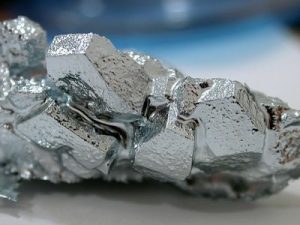 Rasa Shastra is a branch of Ayurveda Science which deals with the preparation of rasa medicine including different forms of medicine. Rasa here gives the meaning of Mercury (Hg). Parad is Sanskrit name for mercury. Why mercury is called as Rasa is because it has the capacity to form amalgam with other metals. Gold reacts with nothing; however mercury can for an amalgam with gold. Not only with gold, with many other metals on the periodic table, it can form amalgam.
Rasa Shastra is a branch of Ayurveda Science which deals with the preparation of rasa medicine including different forms of medicine. Rasa here gives the meaning of Mercury (Hg). Parad is Sanskrit name for mercury. Why mercury is called as Rasa is because it has the capacity to form amalgam with other metals. Gold reacts with nothing; however mercury can for an amalgam with gold. Not only with gold, with many other metals on the periodic table, it can form amalgam.
Many talks are going on to stop the manufacture and use of medicine that use mercury. In Ayurveda, there is especial branch Rasa shastra , that is mainly based on Mercury. So is the use of Mercury in Ayurveda is really threatening, or toxic? Big question arises here and most people misinterpreted the use of mercury in Ayurveda.
First of all people must understand everything is toxic or poisonous if not used in dose and amount. The mercury used in Ayurveda has a lot of pre procedure to purify it. Series of chemical reaction takes place when the mercury is ready to use as a medicine. Furthermore mixture of different other drugs or metals are prepared to completely change the character of life taking mercury to life supporting medicine.
Here are the points on mercury that are used in Rasa Shastra:
- Parada (Mercury):
- Synonyms: Rasaraja, Rasendra, Maharasa, Jeeva, Shivavirya, Rasa, Suta, Amrita, Chapala, chala, dhurtaka, reta, raseshwor etc.
- All the name of lord shiva is the synonyms of Parada.
- Pure Parada has bluish tinge in the center and brightness in the periphery and shines like midnoon sun.
- Impure Parada is smoky pale and multi-colored.
- Parada Doshas: The defects of mercury has been classified as :
| Naisargika doshas (natural defects) | 3 types |
| Yougik doshas (defects due to adulteration ) | 2 types |
| Oupadika doshas or kanchuka doshas (Doshas due to environment) | 7 types |
Various methods are used in purification of Rasausadhi
For these many processes are used such as boiling in cow’s milk or urine, soaking in vinegar, or keeping the substance in buttermilk etc.
Different parada yogas and their doses
| S.n. | Parada yoga | Dose |
| 1. |
Kajjali |
1/32-1/16 rati |
| 2. |
Rasa sindur |
1/16-1 rati |
| 3. | Sweta parpati | 5-10 rati |
| 4. | Sworna parpati | ½-1 rati |
| 5. | Rasa parpati | 2-10 rati |
| 6. | Panchamrit parpati | 2-8 rati |
| 7. | Makardhoj | ¼-1 rati |
Few points on Rasa Shastra
- Nagarjuna is the founder of Rasasastra.
- Rasausadhi: Medicine which is prepared from Suddha Parada (Mercury) is known as Rasausadhi.
- Katausadhi: Medicine which is prepared from Medicinal plants is known as Katausadhi.
- Puta : Metals and minerals like Parada, abharaka, suvarna etc and ratnas (gems) are not suitable for internal administration without subjecting them to paka (heating process) and the process of paka is called bhasmikaran ( Incineration). The correct measure of deciding the degree of paka (samyak paka praman) is defined as Puta.
E.g. Maha Puta Kapot Puta
Gaja Puta Valuka Puta
Kukkuta Puta Varaha Puta
Yantra: The instruments employed to carryout different procedures involved in the parade samskars are known as Yantras.
- The measures through which parade is controlled is also defined as Tantras.
- They are also used in marana (incineration) and sattwapatana (Extraction of essence) of ratnas and dhatus.
- Mostly used yantra in rasa sastra is Khalva yantra.
a) Dola yantras
b) Khalva yantra
c) Sthali yantras
d) Palika yantras
e) Swedan yantras
f) Puta yantras
g) Tula yantras
h) Valuka yantras
i) Damaru yantras Etc.